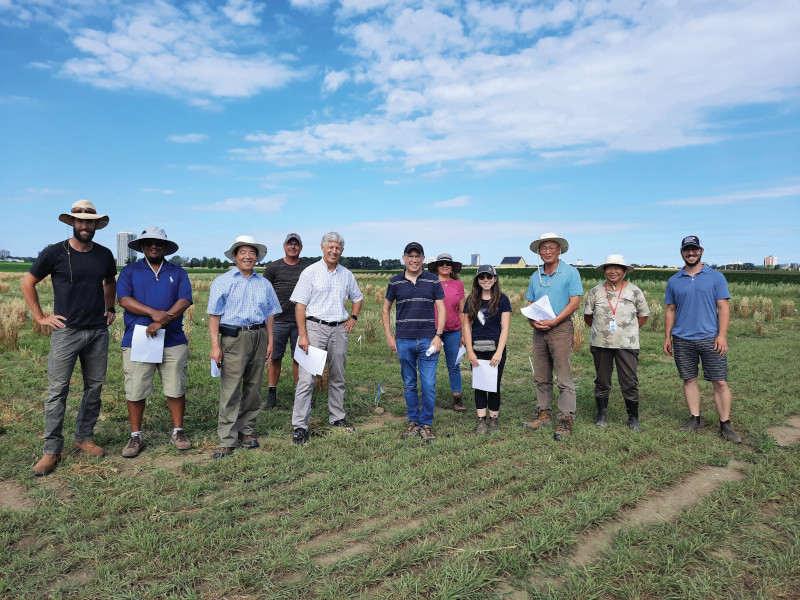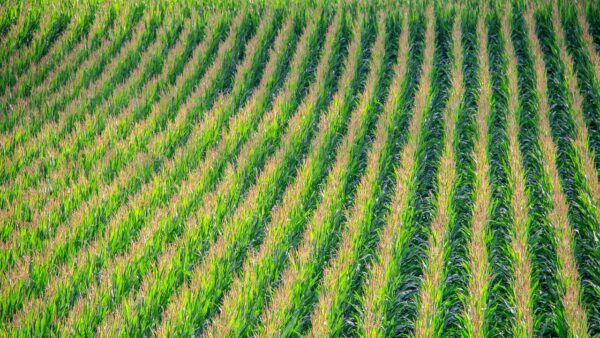EACH FEBRUARY, members of the Prairie Grain Development Committee and the Western Canada Canola/Rapeseed Recommending Committee meet to approve registration of new cereal, pulse and oilseed varieties developed by federal government and private breeders. These newly approved varieties give Canadian farmers more options when they make seeding decisions in the spring._x000D_
_x000D_
Health Concerns Drive Canola Development_x000D_
A total of 83 Roundup Ready, Liberty Link and Clearfield canola cultivars were approved for full registration by the WCC/RRC members with 10 Roundup Ready and two Liberty Link cultivars receiving interim recommendation. Eighteen of these were varieties with lower amounts of linoleic acid (Omega-6) developed by Dow AgroSciences Canada Inc. (14), Cargill Specialty Canola Oils (3) and Pioneer Hi-Bred Ltd. (1)._x000D_
_x000D_
Increasing global demand for cooking oil containing Omega-9 trans-fatty acid, which is healthier for human consumption, is fuelling the development of canola varieties with low linoleic acid. Four canola hybrid varieties that were recommended for registration—2012 Clearfield, 2014 Clearfield, 1012 Roundup Ready and 1014 Roundup Ready—are part of Dow AgroSciences’ Nexera line of Omega-9 varieties._x000D_
_x000D_
“Canola growers have been asking for new varieties that will set a new standard in profitability and performance,” said Mark Woloshyn, Nexera brand manager, in a press release. “We believe these new Nexera varieties will exceed their expectations.”_x000D_
_x000D_
Several canola hybrids from Monsanto’s canola breeding program were also recommended for registration, two of which—73-15 RR and 73-75 RR—will be introduced as new DEKALB canola hybrids in 2011._x000D_
_x000D_
“The new products were adapted to address the concerns of specific regions in Western Canada,” said Dave Kelner, Monsanto’s technology development lead for Western Canada, in a press release. “For instance, 73-15 RR works well in areas that are limited in the crops they can successfully grow because of a shorter growing season.”_x000D_
_x000D_
Fusarium Resistance Needed in Wheat_x000D_
Thirteen wheat cultivars were recommended by the Prairie Recommending Committee for Wheat, Rye and Triticale: five Canada Western Red Spring wheat cultivars; two Canada Western Red Winter cultivars; one Canada Western Hard White Spring cultivar; one Canada Prairie Spring Red cultivar; and four General Purpose wheat cultivars._x000D_
_x000D_
When looking at test results for all first-, second- and third-year wheat cultivars, members of the WRT Quality and Disease Evaluation and Agronomics teams focussed on each candidate’s fusarium resistance. This was due to the record-high incidents of fusarium head blight that occurred in crops grown across Western Canada last year, because of excessive rainfall._x000D_
_x000D_
Graham Worden, chair of the WRT Quality Evaluation team, is concerned about the potential for continuing fusarium damage to CWRS crops. “It looks like half of the CWRS varieties we’re growing in Western Canada have poorer fusarium resistance ratings,” he says. “There are better varieties coming into our system and they should be adopted as quickly as possible.”_x000D_
_x000D_
Characteristics like yield and milling and baking quality are deemed to be very important by the WRT evaluation teams when judging a new CWRS cultivar, but Worden says fusarium resistance is just as vital. Domestic and international CWRS customers won’t accept a high level of fusarium-damaged kernels because of their link to mycotoxins such as deoxynivalenol (DON) and its potential health risk for humans._x000D_
_x000D_
Worden would like to see development of a mechanism for the Recommending Committee to use to begin replacing CWRS varieties most susceptible to FHB or other weaknesses. “We should really be thinking about how to get some of these varieties of concern out of the system,” he says. One suggestion is the development of a recommended varieties list which would provide wheat growers with more information when selecting CWRS varieties. Another approach would be to look at a more streamlined deregistration process to remove older, underperforming varieties._x000D_
_x000D_
New Barley, Oat Varieties Approved_x000D_
A six-row and a hulless malting barley cultivar, as well as one oat variety, were accepted by the Prairie Recommending Committee for Oats and Barley._x000D_
_x000D_
FB205 is a smooth-awned two-row forage barley with very high forage yield. It will be seen as an attractive alternative for silage production versus CDC Cowboy, the current two-row forage variety, which has rough awns. It should be well adapted for production across western Canada._x000D_
_x000D_
HB08304 is a hulless malting barley line that shows some significant malting quality improvements over hulless barley lines such as CDC McGwire, and over previous hulless malting varieties such as CDC ExPlus. It demonstrates lower malt protein, higher extract and lower beta-glucan content. It also shows some agronomic improvements such as four per cent higher yield than CDC McGwire, good FHB and DON resistance and resistance to spot-form net blotch, loose smut and stem rust._x000D_
_x000D_
More Options for Pulse Growers_x000D_
There were 18 candidate lines considered and approved for registration by members of the Pulses and Special Crops Recommending Committee. Eight recommended field pea varieties include five yellow cotyledon, two green, as well as one orange-coloured variety. This orange variety, MP1882, has a seed weight, protein content and per cent seed coat breakage that fall in between those of the yellow and green pea check cultivars. Four of the yellow cotyledon semi-leafless cultivars, developed by the Crop Development Centre at the University of Saskatoon, showed improved yield potential over the yellow check varieties, Cutlass and Eclipse._x000D_
_x000D_
Eight lentil varieties—three small red, one extra-small red, one French green, one extra-small and one extra-large green and one Spanish brown—were approved by the committee members. The Spanish brown lentil line, 3097-7, displayed improved yield potential over all check varieties and is taller, which makes harvesting easier. This seed type is suitable for the Spanish market._x000D_
_x000D_
The one recommended dry bean variety, NA06-002, is a high-yielding navy bean with upright indeterminate growth, good seed quality and late maturity and is adapted to the Red River Valley in Manitoba. The recommended fababean variety, FB34-2, has a higher yield and improved lodging tolerance compared to the small-seeded check variety, SSNS-1, and matures earlier than all of the check cultivars._x000D_
_x000D_
Two Flax Varieties Added_x000D_
Members of the Prairie Recommending Committee for Oilseeds voted in support of two flax varieties: FP2300 and FP2270. FP2300 is a brown linseed line with yield equal to CDC Bethune, and maturity lodging-resistance, seed weight, oil content and iodine value similar to Flanders._x000D_
_x000D_
In comparison to CDC Bethune, FP2270 yields similarly over the soil zones of Western Canada, and matures similarly to Flanders, with similar lodging resistance. FP2270’s seed size is significantly larger than that of either Flanders or Bethune. While its oil content is lower, the oil quality is significantly higher._x000D_
_x000D_
Andrea Geary











